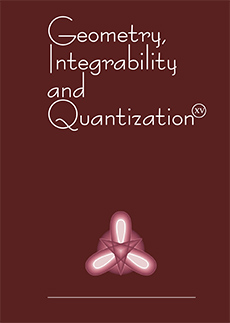Abstract
This is a review of the main ideas of the inverse scattering method (ISM) for solving nonlinear evolution equations (NLEE), known as soliton equations. As a basic tool we use the fundamental analytic solutions $\chi^{\pm}(x,\lambda)$ of the Lax operator $L(\lambda)$. Then the inverse scattering problem for $L(\lambda)$ reduces to a Riemann–Hilbert problem. Such construction has been applied to wide class of Lax operators, related to the simple Lie algebras. We construct the kernel of the resolvent of $L(\lambda)$ in terms of $\chi^{\pm}(x,\lambda)$ and derive the spectral decompositions of $L(\lambda)$. Thus we can solve the relevant classes of NLEE which include the NLS equation and its multi-component generalizations, the $N$-wave equations, etc. Applying the dressing method of Zakharov and Shabat we derive the $N$-soliton solutions of these equations.
Next we explain that the ISM is a natural generalization of the Fourier transform method. As appropriate generalizations of the usual exponential function we use the so-called “squared solutions” which are constructed again in terms of $\chi^{\pm}(x, \lambda)$ and the Cartan–Weyl basis of the relevant Lie algebra. One can prove the completeness relations for the “squared solutions” which in fact provide the spectral decompositions of the recursion operator $\Lambda$.
These decompositions can be used to derive all fundamental properties of the corresponding NLEE in terms of $\Lambda$: i) the explicit form of the class of integrable NLEE; ii) the generating functionals of integrals of motion; iii) the hierarchies of Hamiltonian structures. We outline the importance of the classical $R$-matrices for extracting the involutive integrals of motion.
Information
Digital Object Identifier: 10.7546/giq-6-2005-78-125


